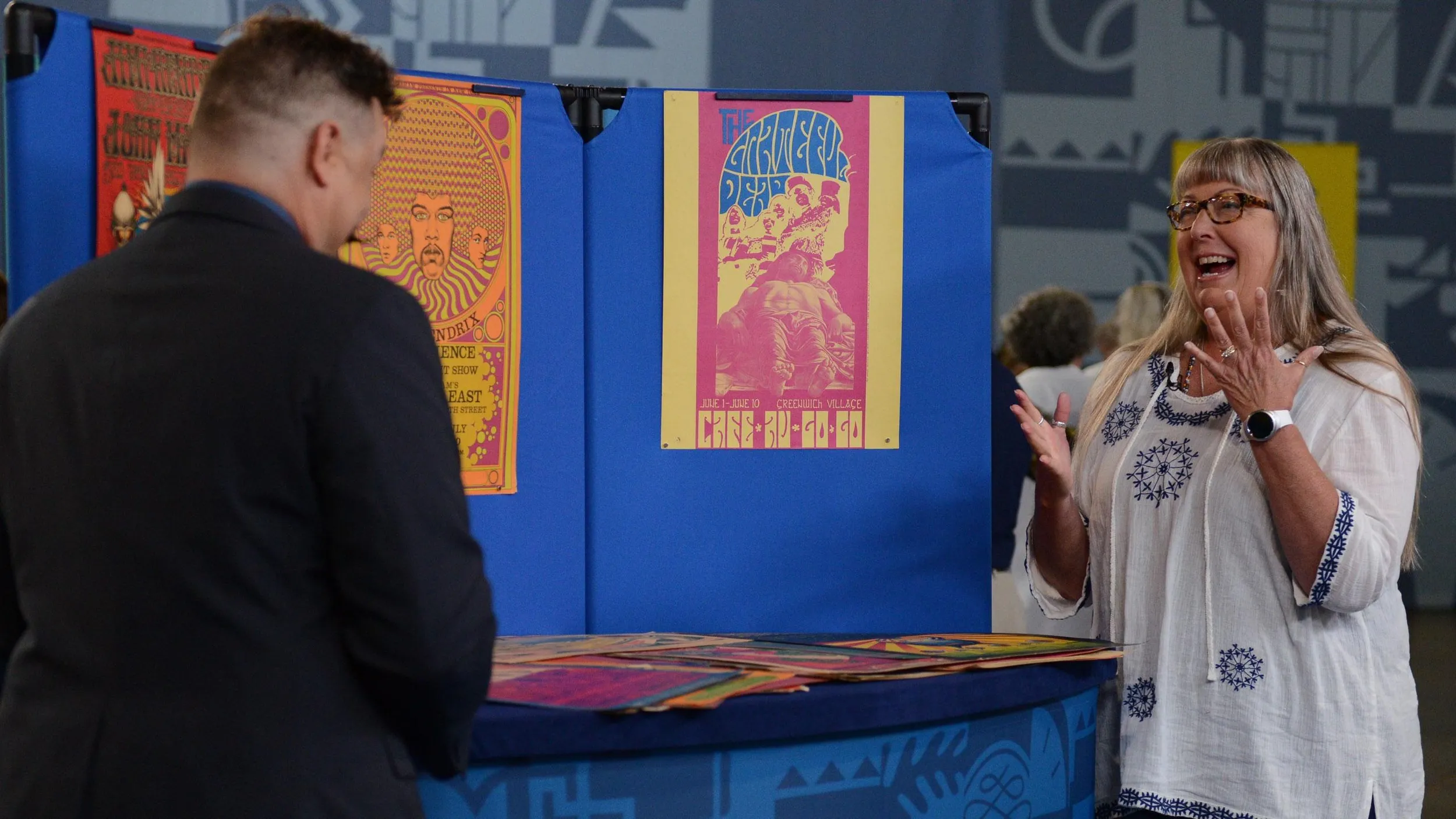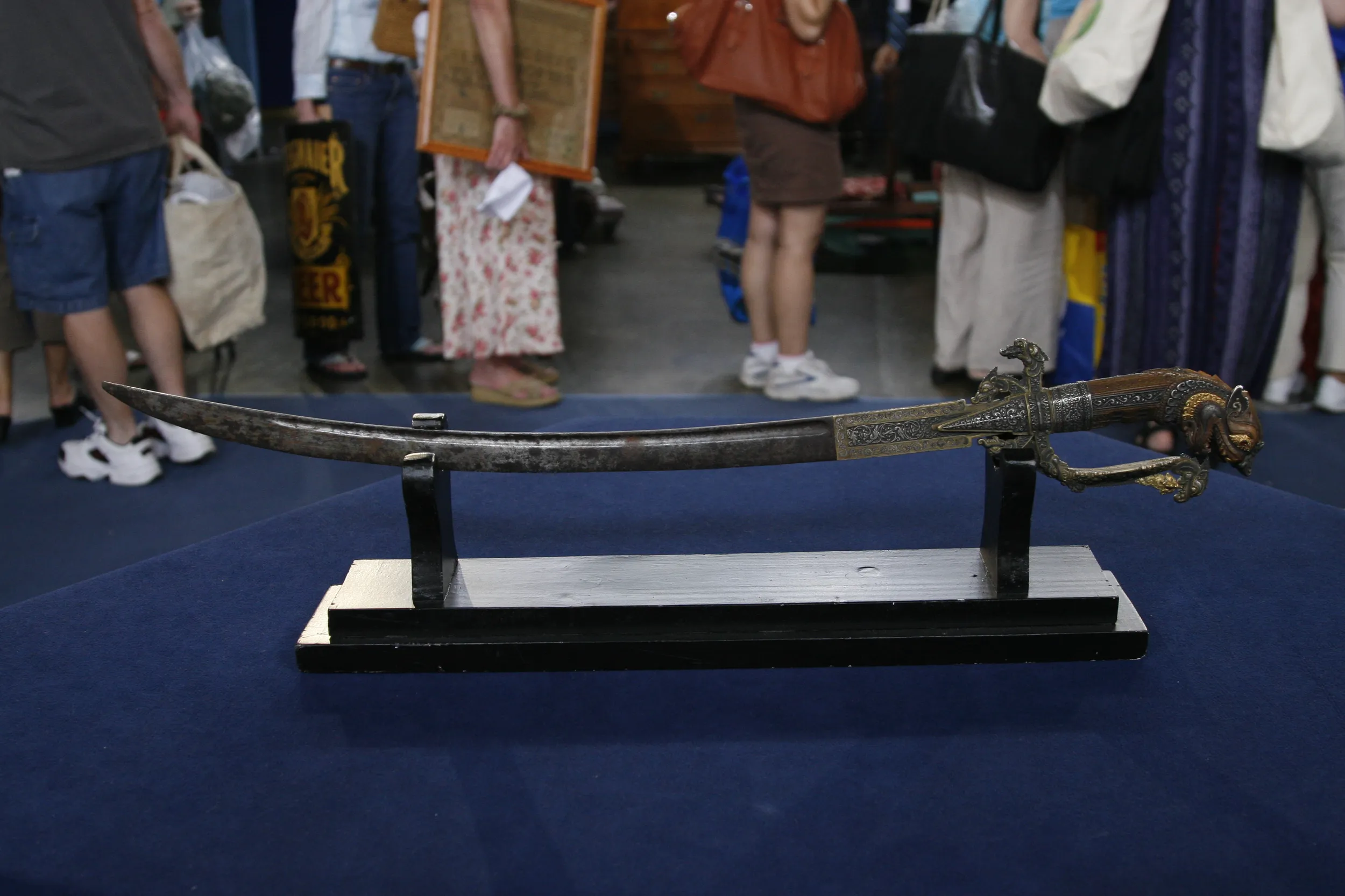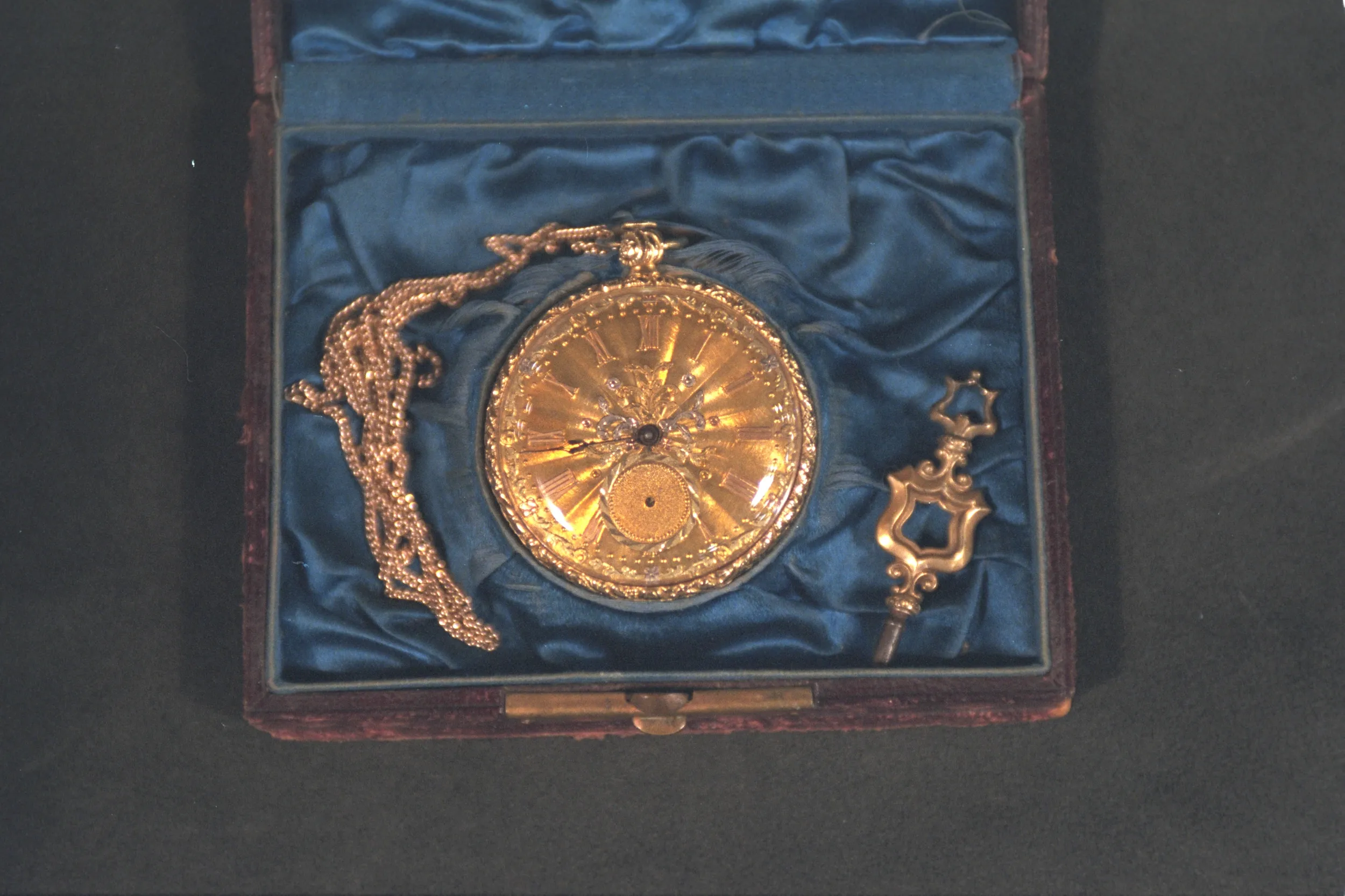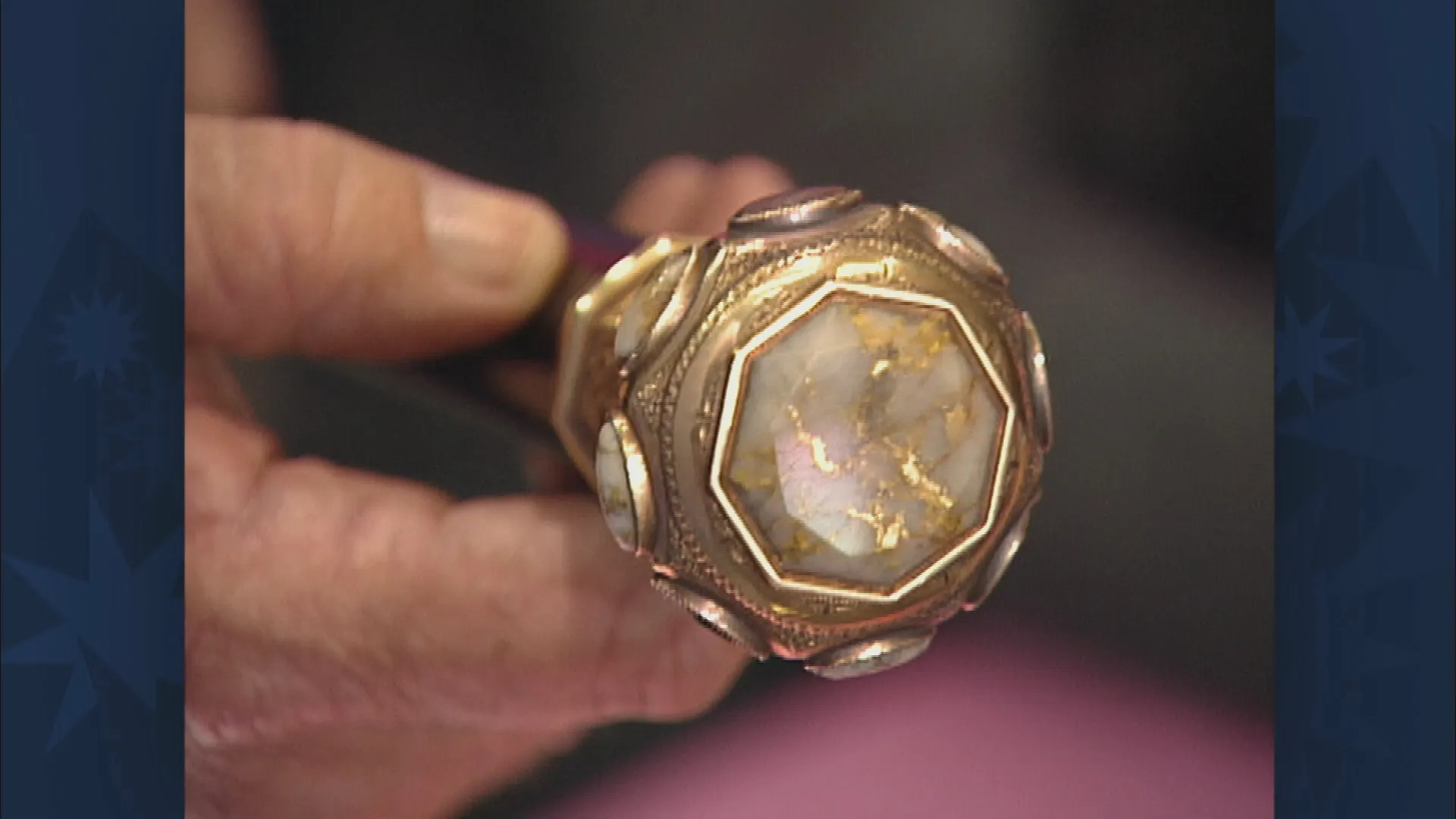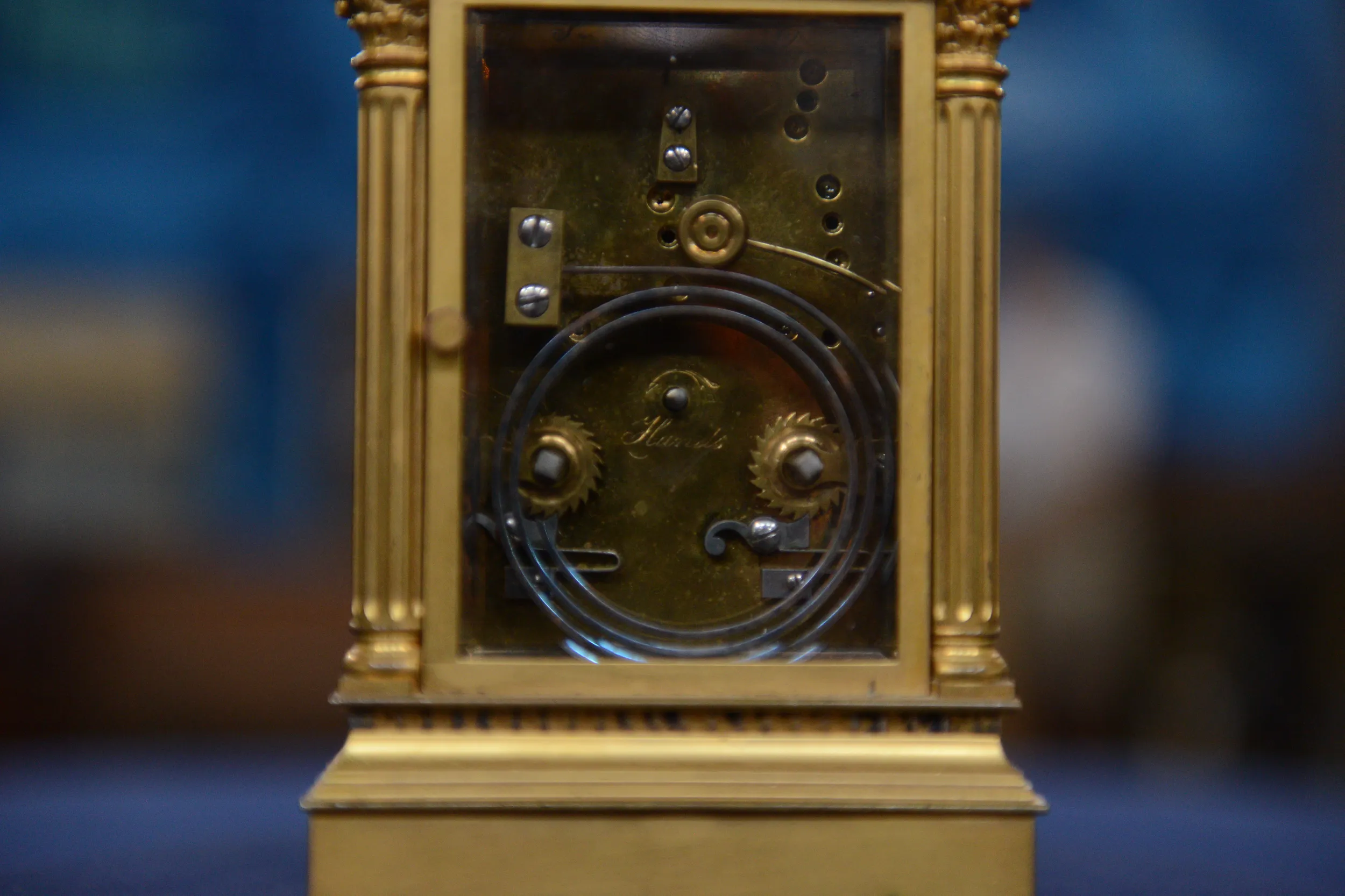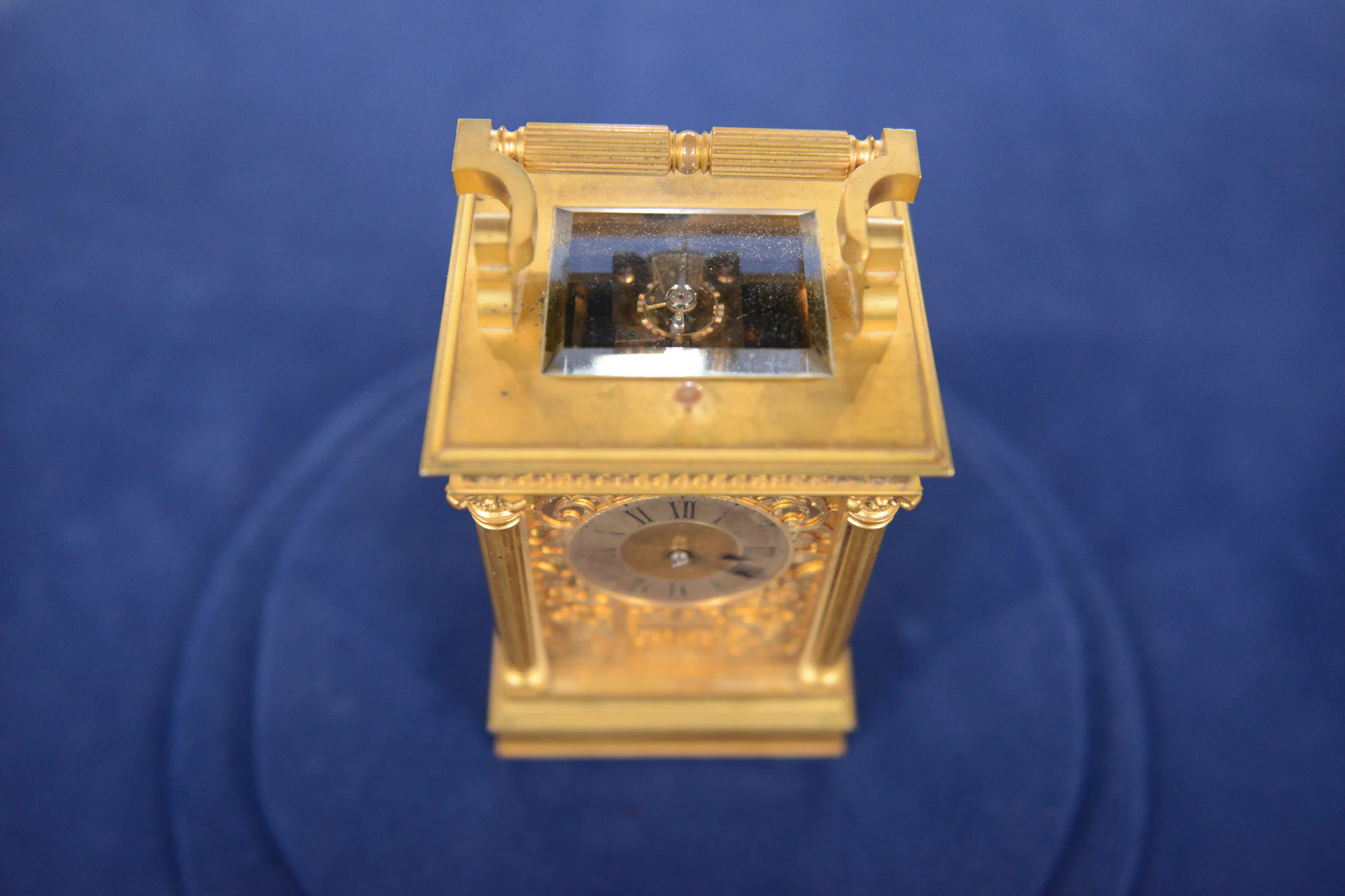GUEST: I brought this little carriage clock. It's been passed down in our family. It was originally my grandmother's great-aunt's.
APPRAISER: Okay.
GUEST: Her husband gave it to her when she was going blind as she got older because it has a really lovely chime, so he bought it for her so that she could tell the time, and it even has a button that she could push to find out what time it was.
APPRAISER: These were usually used for travel. In other words, when you move from one location to another, maybe pre-automobile, whatever, this was an upmarket travel alarm clock.
GUEST: Oh, wow.
APPRAISER: Now, I'm sure you felt the weight of it. These are substantial clocks. And the button that you mentioned right up here on top is the button that you would have reached over in the middle of the night to depress to find out what time it was. And it served undoubtedly your great-aunt well, being blind, that she could at any time go over and find out what time it was, so it'd strike the nearest hour. Did you know where it was made?
GUEST: Um, I know that it was from New Orleans. I'm not sure where it was made, if they bought it there or if it was made there.
APPRAISER: Okay, well, the clock is actually French.
GUEST: Okay.
APPRAISER: Now, it makes perfect sense for these high-grade French clocks to end up in New Orleans. They were looking across the water to France
for their decoration. A lot of gilded furniture in New Orleans, and it's because of the French aesthetic. Now, this is a great example. And I see that it's running right now.
GUEST: Yes.
APPRAISER: Well, it's a brass case clock. Now, the finish has deteriorated. Have you ever thought about having it refinished or anything like that?
GUEST: That's one of the things we were wondering about, how to take care of it.
APPRAISER: If it was mine, I would probably just live with it as it is.
GUEST: Okay.
APPRAISER: Great case. You'll notice the piercing on the sides. This is top drawer stuff, where the sides were pierced and then engraved. On the back, you can see the mechanism where you wind it. You also would set the hands from that point. Let's talk about the age a little bit. That information that you gave me all jives.
I think the clock was probably made around the turn of the century, about 1890 to 1910. I'd loved to have seen a name on the front, maybe a jeweler's name from New Orleans. Makes perfect sense that it was there. Did you ever have it appraised or know anything of value?
GUEST: No.
APPRAISER: Well, these are nice clocks. People are liking smaller clocks right now. I'm seeing that the younger audiences are attracted to this form of clock. It can go with contemporary furniture. It is such a jewel. I think it would retail today for somewhere in the $2,000 to $2,500 range like this.
GUEST: Oh, wow.
APPRAISER: Thank you for coming today.
GUEST: Thank you!

